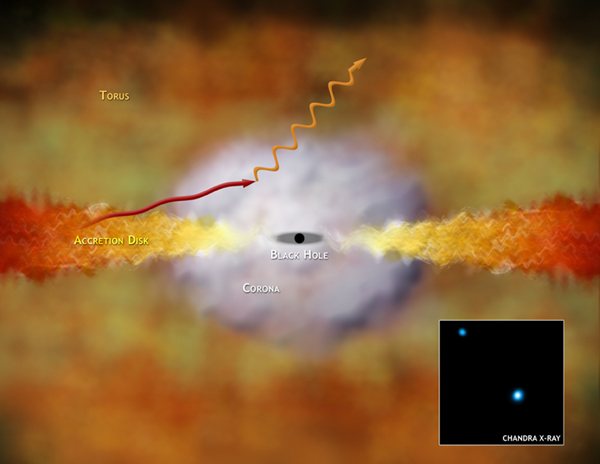SDSSp J1306: A quasar seen as it was 12.7 billion light years ago.
(Image: NASA/CXC/D.Schwartz & S.Virani; Illustration: NASA/CXC/M.Weiss)
Caption: The X-rays in Chandra's image (inset) of this distant quasar have taken 12.7 billion light years to reach Earth, only a billion years less than the estimated 13.7 billion-year-age of the Universe. Chandra's data on the distribution of X-rays with energy are evidence that the supermassive black hole that powers this quasar is fully grown and must have formed surprisingly quickly after the Big Bang. The accompanying illustration shows how these high-energy X-rays might be produced as material from a large torus of gas and dust in the center of a galaxy swirls toward a black hole. Collisions of low-energy optical, ultraviolet and X-ray photons from the accretion disk with the hot electrons in the corona boost the energy of the photons up to the high-energy X-ray range. (The object in the upper left of the Chandra image is a foreground galaxy.)
Scale: X-ray image is 0.6 arcmin per side
Chandra X-ray Observatory ACIS Image
|


